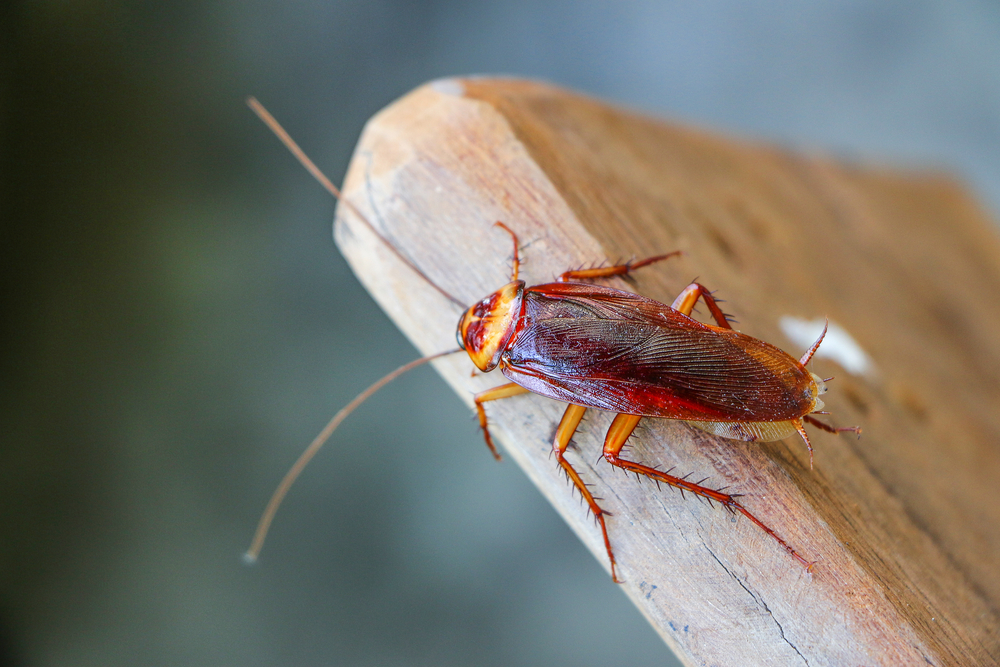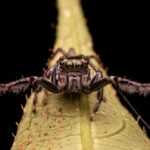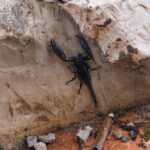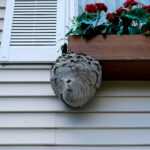Top Roach Types and How to Manage Them Effectively
Need to identify roach types in your home? This article will help you recognize common cockroach species, their traits, and effective ways to manage them.
- Identifying common roach species, such as the German, American, and Oriental cockroaches, is essential for targeted pest control strategies.
- Understanding the cockroach life cycle, including their egg, nymph, and adult stages, is crucial for effective management and intervention.
- Implementing a combination of DIY methods, professional pest control services, and preventative measures, like sanitation and home maintenance, is key to controlling and preventing cockroach infestations.
Identifying Common Roach Types and Species
Cockroaches are a diverse group of insects, and identifying the specific species invading your space is the first step towards effective cockroach control. Recognizing the physical traits and habits of different cockroach species aids in implementing the best management strategies.
German Cockroach
The German cockroach, scientifically known as Blattella germanica, is one of the most common species found in homes. These light brown cockroaches german cockroach with two dark stripes are small in size but notorious for their rapid reproduction.
German cockroaches prefer warm, humid environments and are commonly found in kitchens and bathrooms where food and water are readily accessible. Their fast multiplication necessitates prompt pest control measures to prevent widespread infestations.
American Cockroach
The American cockroach, or Periplaneta americana, is easily recognizable by its large size and reddish-brown color. They can grow up to 3 inches in length and have a distinctive yellow figure-8 pattern on their thorax.
American cockroaches are typically found in damp basements and food preparation areas, often entering homes by hitchhiking on items brought in from outdoors.
Oriental Cockroach (Oriental Roach)
Oriental cockroaches are dark brown to almost black and are often referred to as “water bugs” due to their preference for cool, damp environments. They are commonly found in basements, crawl spaces, and humid areas around drains and pipes.
Oriental cockroaches emit a musty odor and move slower than other cockroach species.
Brown Banded Cockroach
Brown banded cockroaches are small, dark brown with light yellow bands across their wings and abdomen. They tend to favor dry and warm environments. Often, you can find them in elevated areas such as bedrooms and living rooms, distancing themselves from water sources.
One significant challenge in eradicating them is their tendency to hide in electronic devices and small cracks.
Smoky Brown Cockroach
Smoky brown cockroaches are dark brown with white segments at the end of their antennae. They thrive in humid areas and are often found outdoors but can be introduced into homes on firewood and stored boxes.
Their preferred living conditions include high humidity and outdoor environments.
Life Cycle of Cockroach Species: Egg, Nymph, and Adult Stages
Grasping the life cycle of cockroaches is crucial for effective pest control. Cockroaches undergo three main stages: egg, nymph, and adult. Each stage presents unique challenges and opportunities for intervention.
Egg Stage (Ootheca)
The life cycle begins with the egg stage, where female cockroaches produce an egg case, or ootheca. These egg cases can contain between 15 to 40 embryos, depending on the species.
For example, a female German cockroach can lay up to 40 eggs per case, while a female Oriental cockroach can produce about eight egg cases in her lifetime.
Nymph Stage
After the eggs hatch, the immature cockroaches, or nymphs, emerge. Nymphs look similar to adult cockroaches. However, they do not have fully developed wings or reproductive organs. They undergo several molts—up to 13 times—before reaching adulthood.
This stage marks the period of growth and development.
Adult Stage
Upon reaching the adult stage, cockroaches are capable of reproduction, which allows for rapid population growth. The lifespan of adult cockroaches varies by species; for instance, American cockroaches typically live around one year.
Habitats and Behaviors
Cockroaches, highly adaptable creatures, thrive particularly in warm and humid areas. Their habitats and behaviors vary significantly between indoor and outdoor settings and are influenced by their nocturnal nature.
Indoor Cockroaches
Indoor cockroaches, such as the German cockroach, tend to hide in cracks and crevices around kitchens, bathrooms, and other warm, humid places where cockroaches hide. They need food, water, and shelter to survive and can often be found around water heaters, in cupboard cracks, and stoves.
Although they can survive weeks without food, they seek accessible food sources for optimal living conditions.
Outdoor Cockroaches
Outdoor cockroaches, like the Turkestan cockroach, prefer warm, dry climates and are often found in leaf litter, under shrubs, and other natural debris. They can be attracted indoors by light and may enter homes during peak summer heat.
Perimeter sprays can help control their populations if they infiltrate homes.
Nocturnal Activity of Cockroach Species
Cockroaches are primarily nocturnal, meaning they are most active during the night. During the day, they tend to hide in moist, dark crevices, emerging at night to forage for food and water.
Health Risks
Cockroaches are not just a visual nuisance; they pose significant health risks through disease transmission and allergens. Early detection and control of cockroach populations prevent the spread of diseases and reduce allergy symptoms.
Disease Organisms
Cockroaches carry various bacteria, including Salmonella spp. and Shigella spp., which can contaminate food and surfaces in homes. This contamination can lead to serious health risks, emphasizing the importance of proper sanitation and pest control methods to reduce these threats.
Allergies and Asthma
Exposure to cockroach allergens can exacerbate asthma symptoms, particularly in children. Cockroach infestations can significantly impact health by increasing allergen levels, leading to more frequent asthma attacks and allergic reactions.
It is essential to manage infestations effectively to protect sensitive individuals.
Effective Cockroach Control Methods
Effective cockroach control requires a combination of methods, including DIY approaches, professional pest control services, and integrated pest management (IPM). Combining these methods leverages their strengths for the best results.
DIY Pest Control Methods
Common DIY methods for controlling cockroach infestations include bait stations, boric acid powder, diatomaceous earth, and sticky traps. For optimal effectiveness, place bait traps under appliances, along walls, and in cabinets.
Additionally, gel baits can target cockroaches directly in specific hiding spots.
Integrated Pest Management
An integrated pest management (IPM) approach combines several methods for effective cockroach control. This includes sealing entry points, regular monitoring, and targeted treatments. Proper home maintenance, such as sealing cracks and fixing leaks, is critical to limiting cockroach access and preventing infestations.
Preventing Future Cockroach Infestations
Preventing future infestations involves continuous efforts in sanitation, home maintenance, and regular monitoring. These practices significantly reduce the risk of cockroach re-infestation.
Regular cleaning and removing potential food or water sources are crucial in deterring cockroaches. Proper food storage and clean surfaces significantly reduce the risk of infestations.
Sealing cracks and crevices in walls, floors, and around windows and doors reduces harborage areas for cockroaches. Fixing plumbing leaks and maintaining proper ventilation controls humidity levels, making your home less attractive to cockroaches.
Using sticky traps and cockroach baits can effectively help monitor cockroach populations and understand their movement patterns. Regularly checking and replacing traps ensures ongoing monitoring and prevents re-infestation.
Understanding the different types of cockroaches, their life cycles, and effective control methods is crucial for managing infestations. By implementing proper sanitation practices, home maintenance, and regular monitoring, you can significantly reduce the risk of future infestations. Take proactive measures today to keep your home roach-free.
Frequently Asked Questions
Is it worth killing roaches?
Yes, it is worth killing roaches, as they can carry harmful bacteria that cause serious infections, posing health risks to you and your family. Taking action against them is essential for maintaining a safe and clean living environment.
What is the hardest roach to get rid of?
The hardest roach to get rid of is the German cockroach. Its rapid reproduction and ability to hide make it particularly challenging to eliminate.
What are the most common types of cockroaches found in homes?
The most common types of cockroaches found in homes are the German cockroach, American cockroach, Oriental cockroach, Brown Banded cockroach, and Smoky Brown cockroach. It is essential to identify and address infestations promptly for effective pest control.
How can I identify a German cockroach?
To identify a German cockroach, look for its light brown color and two distinct dark stripes running down its back. They are often found in kitchens and bathrooms, thriving in areas with food and water access.
What health risks are associated with cockroach infestations?
Cockroach infestations pose significant health risks by carrying bacteria like Salmonella and Shigella, which can contaminate food and surfaces. Additionally, they are known to trigger allergies and asthma, particularly in children.




